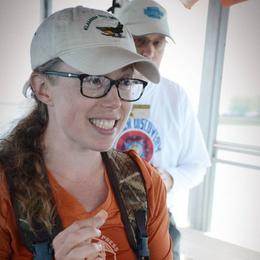An early sign of spring, Ospreys are making their return to the Great Lakes region. The magnificent fish-hawk with striking brown and white plumage can be seen flying along shallow fish-filled waters of the Great Lakes region, hovering, and then plunging feet-first to catch fish in its talons. Ospreys can be found across Michigan, but they once faced an uncertain future!
Osprey were severely impacted by the use of the pesticide DDT, and were listed as a threatened species in Michigan after their population declined precipitously in the 1960s. Fortunately the sale and use of DDT was banned in 1972 giving Ospreys a fighting chance. Thanks to the hard work and dedication of MI Birds partners, Michigan Department of Natural Resources, the Detroit Zoological Society, and friends at Huron Clinton Metropark Authority, the Osprey was successfully re-introduced to southern Michigan and removed from the threatened species list in 2009!
However, it is incredibly important that Osprey continue to be monitored closely state-wide to document the success of Osprey populations. While this species now boasts over 200 known nest locations throughout the state, it is still listed as a state species of special concern.
Volunteer community scientists, like you, can help us understand how Osprey are rebounding across the state! All ages and experience levels are invited to participate in the Adopt-A-Nest monitoring program! It’s easy to participate: A minimum commitment of three nest visits of at least 15-minutes each, between the May 15 and August 1, 2021 is all it takes to determine 1) if there is a nesting attempt, 2) if birds are actively nesting, and 3) if there are any chicks in the nest. You can visit your nest more often if you’d like!
Binoculars are adequate for most observations, but a spotting scope is useful to determine the number of chicks. Most nests are located on cell towers and are easily viewable from public roads.
If you’re interested in adopting an Osprey nest, please fill out this sign-up form.
MI Birds is a public outreach and education program created by Audubon Great Lakes and Michigan Department of Natural Resources, which aims to increase all Michiganders' engagement in the understanding, care, and stewardship of public lands that are important for birds and local communities.





